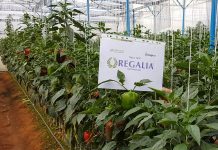Jim Lane
Algae has been touted as the ultimate platform for fuels, chemicals, nutraceuticals, proteins even cancer therapies.
There’s been a rate of progress that would impress any devotee of Moore’s Law and a series of wacky claims that would impress any devotee of P.T. Barnun.
So, what are the real trends?
We’ve traveled several years now since the “Summer of Algae” when it seemed like half the venture capitalists in life sciences were forming algae ventures, or thinking about them. Since then a cluster of research projects and proto-companies have been tackling the real-world challenges of yield, harvesting, dewatering and application development.
Below are the Top 10 Trends that should be commanding your attention.
1. Big Oil, L’il algae
![Sapphire-Energy-Hot-50_4[1].jpg](http://www.altenergystocks.com/wp-content/uploads/2017/08/Sapphire_Energy_Hot_50_4_1_.jpg)
This past week, algae observers were startled to learn that Reliance Industrial Investments, the Indian oil holding company, placed a $2.4M purchase order for Algae.Tec algae production technology as a follow-up to an initial investment of A$1.5M by Reliance, with additional investments of AU$1.2 million over the next 2 years. The purchase order for Algae.Tec modules will be supplied and completed over approximately the next nine months. The Algae.Tec solution is less than one tenth the land footprint of pond growth options, while its enclosed module system is designed to deliver the highest yield of algae per hectare, and solves the problem of food-producing land being turned over for biofuel production.
Overall, it’s Reliance’s third algae investment. A Credit Suisse report on the company, (see page eight of the report, downloadable here), revealed last year that Reliance has invested a total of $116 million (Rs6.2 billion). $93.5 million (Rs5.0 billion) in Algenol and 22.5 million (Rs1.2 billion) in Aurora Algae.
But there’s more algae activity stirring in the world of Big Oil. In November, Sapphire Energy and Phillips 66 announced a strategic joint development agreement to work together to collect and analyze data from co-processing of algae and conventional crude oil into fuels, and to complete fuel certifications to ready Sapphire Energy’s renewable crude oil for wide-scale oil refining.
Under the agreement the companies will expand Sapphire Energy’s current testing programs to further validate that Green Crude can be refined in traditional refineries and meet all of the Environmental Protection Agency’s (EPA) certification requirements under the Clean Air Act. This includes determining the optimal operating conditions for processing algae crude oil into American Society for Testing and Materials-certified diesel, gasoline and jet fuel. Once the study is finished, the companies will work together to complete the EPA certification process to register a new fuel product entering the market. Sapphire Energy is now producing crude oil daily from algae biomass cultivated and harvested at the company’s Green Crude Farm, located in Columbus, N.M.
Meanwhile, let’s not forget the Synthetic Genomics-ExxonMobil relationship, which debuted in spectacular fashion with a $500M initial spending target in 2009. Last year, SGI announced a new co-funded research agreement with ExxonMobil to develop algae biofuels. The new agreement is a basic science research program that focuses on developing algal strains with significantly improved production characteristics by employing synthetic genomic science and technology. Financial details of the agreement were not disclosed. Last year, ExxonMobil CEO Rex Tillerson told PBS, “We’ve come to understand some limits of that technology, or limits as we understand it today, which doesn’t mean it’s limited forever. The venture is “probably further” than 25 years away from successfully developing fuels.”
The last public update on ExxonMobil’s algae efforts was here.
2. Making Mo’ Better
![Algenol-img[1].jpg](http://www.altenergystocks.com/wp-content/uploads/2017/08/Algenol_img_1_.jpg)
Algae is renowned for its production potential after all, the mass can double in as little as 24 hours meaning that it could dwarf the productivity of terrestrial plants. But translating potential into industrail scale “business as usual” hasn’t been a joyride.
Hence it was big news when, last March, Algenol confirmed that the company had exceeded production rates of 9,000 gallons of ethanol per acre per year and company CEO Paul Woods said that ” I fully expect our talented scientific team to achieve sustained production rates above 10,000 by the end of this year.” Just last September, in the opening plenary session at the Algae Biomass Summit, Woods revealed that the company, at its 4-acre, outdoor Process Development Unit in Lee County, Florida, had achieved continuous production of ethanol at the 7,000 gallon per acre level.
It was a substantial increase over the company’s original target of 6,000 gpa, and were achieved in outdoor operation under normal operating conditions. With the news, Woods confirmed that the company, after completing major construction activities at their integrated pilot scale biorefinery in 2012, has fully shifted focus to demonstrating the commercial viability of Direct to Ethanol technology at its pilot facility and identifying sites for commercial projects to begin in 2014.
3. Scale
Now, Solazyme (SZYM) doesn’t like to think of itself as an algae company any more than Budwesier wants to be known as a yeast company both prefer to define themselves by their products rather than around the details of their fermentation technology. Nevertheless, Solazyme does use algae fermentation and they have been getting to massive scale.
Last month, the company announced that commercial operations have commenced at both Archer Daniels Midland Company’s (ADM) Clinton, Iowa facility, and the downstream companion facility operated by American Natural Products in Galva, Iowa. Volumes shipped to Brazil are being utilized for market development activity in advance of the opening of the Solazyme Bunge Renewable Oils Moema facility. As stated previously, production at the ADM and ANP facilities is expected to ramp to a nameplate capacity of 20,000 MT/yr within 12-18 months, with targeted potential expansion to 100,000 MT/yr in subsequent years.
![Solazyme-petri[1].jpg](http://www.altenergystocks.com/wp-content/uploads/2017/08/Solazyme_petri_1_.jpg)
The company noted, in a release, that “truckloads of product are now shipping from the Iowa operations for use in applicatio
ns including lubricants, metalworking and home and personal care. These shipments are being made pursuant to multiple supply agreements as well as spot purchases, and include reorders.” Highlighting the flexibility of Solazyme’s technology platform, Solazyme, ADM and ANP have successfully manufactured three distinct and unique tailored oil products at the facilities, and products are currently being sold and distributed in both the U.S. and Brazil.
The Clinton news is a follow-through from the news in December 2012 that Solazyme has announced the completion of multiple initial fermentations in 500,000 liter fermenters at ADM’s Clinton, Iowa facility about four times the scale of the vessels in Solazyme’s own Peoria, IL facility. That set of runs broke through the ferment wall: namely that, hitherto, no next-generation producer had successfully achieved linear scale-up in 500,000 liter (or larger) fermenters. It’s simply impossible for fermentation-based technologies to affordably produce fuels and chemicals in small fermentation tanks its way too much capex, too much opex to produce, say, 10,000 liters at a time.
Also at scale in fermentation? DSM and Alltech.
3. Bring on the Apps
“We’re like the iPhone,” said Heliae CEO Dan Simon, “and companies like Triton are bringing forward the apps”. We may well see companies like Heliae selling licenses for its production technology to customers who in turn license and introduce apps, to generate fuels, chemicals, nutraceuticals, as well as complex proteins, enzymes, and other biologics that are cost-effective and have immediate applications in agricultural, pharmaceutical, and other retail markets.
Progress with the “iPhone” is becoming pretty clear, with Heliae booking $4.2M in sales already in 2014 for their raceway-based algae growing technology, after recently completing a $13 million demonstration plant. Although the company has equipment on site to develop fuels from the algae, and the company has previously turned algae into jet fuel on site, Heliae is focusing on the growing side of the equation. The company brought in more than $1 million in revenue last year.
![heliae[1].jpg](http://www.altenergystocks.com/wp-content/uploads/2017/08/heliae_1_.jpg)
So, what are the hot apps?
Proteins. Almost 10 years ago, out of Dr. Steve Mayfield’s lab at Scripps and later at the University of California at San Diego, a series of discoveries made it possible, for the first time, that algae could be used a platform for synthetic biology and genetic innovation just as yeast and e.coli had been used for years. Now,tThere are subtle and microscopic reasons why algae could be a platform to rival e.coli some related to superior folding (proteins that don’t fold properly are generally inactive, or can become toxic or change their function). Mayfield’s technology ultimately led to the formation of Rincon Pharmaceuticals in 2004 to pursue commercialization. Sapphire ultimately acquired, and pursued proteins as a side project.
By 2010, Mayfield was reporting in Plant Biotechnology Journal that seven diverse human therapeutic proteins could be produced in Chlamydomonas reinhardtii, a green alga used widely in biology laboratories as a genetic model organism, with a 60 cents-per-gram protein production costs. Even then, that was “about the same cost estimates for the least expensive protein expression systems presently available, and considerably cheaper than mammalian cell culture,” Mayfield and his team reported at the time.
With expected improvements in the ability to express proteins in algae, “and the continued reduction in algal biomass cost associated with the large scale efforts to use algae for biofuel production, we anticipate at least a ten-fold reduction in the costs over the next few years, which should make algal protein production the least expensive platform available.”
Ultimately, some of the old Rincon IP was spun out of Sapphire and back to Mayfield and Pyle, who then founded Triton last fall. Triton’s platform is known as PhycoLogix, and uses algae to produce compounds that other organisms cannot, that can be safely consumed without modification, and can be cultivated at large scale inexpensively. Heliae ibvested $5M late last year.
Nutraceuticals. In September, Algaeon announced the signing of a multi-year, multi-million dollar supply agreement with Valensa International to provide high value “condition specific” nutraceuticals to the marketplace. Algaeon, in cooperation with Valensa, is using its extensive knowledge of algae production to bring a new level of efficiency and quality for algae-based ingredient supply to the nutraceutical market. Algaeon will develop manufacturing processes and technology while Valensa will produce finished form condition specific products that will be sold to marketers with recognized brands.
DHA. This is the secret ingredient in Fish Oil or Omega-3s sold at your pharmacy for its health benefit. In late 2011, Sofiprotéol, the industrial and financial arm of the French plant oils and proteins sector, established a JV with Fermentalg to “industrialize, produce and market oils from microalgae that are rich in oils from the Omega 3 family (EPA-DHA)” with a goal of assuring “the development of its patented process until the early scale-up phases of its technology.” Sofiprotéol is providing the bulk of financing. In early 2013, it was training its focus on “omega-3 fatty acids, coloring agents, antioxidants and biopolymers, etc” according to an interview in Algae Industry Magazine. A signature Series C capital raise in Q3 of this year which netted $16M and attracted existing investors ACE Management, Demeter Partners, Emertec Gestion, and Picoty Algo plus new investors IRDI and Viveris was in support of a focus on “industrial scale up and commercialization” of its microalgae production for use in “animal feed, biofuels, cosmetics, food, health, and specialty chemicals.”
Also hovering around the DHA scene is Alltech. Their major move into microalgae dates to the acquisition of a former Martek Bioscience plant in Winchester, Kentucky. The plant, which contains 1.26 million liters of fermentation capacity on a 17-acre campus, had been originally built as a yeast production plant, then produced vitamin B2 for Coors, and ultimately was acquired by Martek, before Alltech bought the plant for $14 million. Alltech has publicly discussed a $200 million investment in transforming the plant into heterotrophic algae production facility in Winchester, Kentucky with a focus on production of DHA. The renovated plant opened in April 2011. Right now, the plant can produce 20 tons of algae per 11-day campaign a capacity of roughly 1800 tons per year at current productivity. 1800 tons of algae would have a theoretical maximum, at this stage, of a theoretical maximum of 176 tons of DHA production.
Hybrid platforms. Last year, Cellana announced the launch of its ReNew brand and ReNew Omega-3 line of algae-based products. The ReNew brand was developed to meet the growing demand for more sustainable Omega-3 human health products, animal nutrition products, and biofuel feedstocks. The ReNew portfolio is comprised of four main product categories: ReNew Omega-3, including both ReNew Omega-3 products includes ReNewEPA and ReNewDHA, ReNew Feed as a nutritional product for the animal feed market; ReNew Fuel as an algae-based biocrude, particularly for jet fu
els for commercial and military aircraft; and ReNew Algae, available in bulk for customers to apply their own extraction technologies and develop customized solutions within these application areas. The ReNew product line is derived from Cellana’s scalable, sustainable, and patented ALDUO algae production technology. Cellana’s six-acre Kona Demonstration Facility on Hawaii’s Big Island has produced more than nine tons of algal biomass for commercial testing. At this time, Cellana is raising money for a commercial-scale facility.
Another company with multiple product lines is Aurora Algae. Aurora burst onto the scene in June 2008 with the announcement that it had raised $20 million in series A financing from Oak Investment Partners, Noventi and Gabriel Venture Partners. The company completed an 18-month pilot in early 2009 and said that it has more than doubled the productivity of its selected strains. By August 2013 Aurora said it was looking to move its planned commercial-scale project algae project to Geraldton, Australia where it already has a test project. It has stated that it needs to expand from 6-acre system to 250 acres to be commercially successful.
The company’s key technology – an optimized strain of salt-water algae that is lighter in color than wild-type algaeallows deeper penetration of sunlight, thereby extending the zone for algae reproduction and increasing yield. That’s the Aurora secret sauce: to outcompete, as a form of crop protection, simply to grow too fast for predators and competitors to get a foothold. The four product lines are: A2 Omega-3a family of Omega-3 oils aimed at the nutraceutical and pharmaceutical markets. The first offering in this family, A2 EPA Pure will make the benefits of EPA available to a broader market since it is derived from an allergen-free, vegetarian source. Plus, A2 Feeda family of protein-rich algal grains for the animal and aquaculture markets; A2 Fuela family of biomass and biodiesel applications; and A2 Proteina family of protein-rich powder products for the food and beverage industry.
4. No more venting money, er, I mean CO2.
Then there’s the flue stack which you might as well call the Money Stack, becasue of all the money that is vented every time a company vents CO2. One of the most interesting plays in algae to use it as a means of monetizing CO2 ‚ turning it from a headache into an opportunity.
![bioprocess-algae-2[1].jpg](http://www.altenergystocks.com/wp-content/uploads/2017/08/bioprocess_algae_2_1_.jpg)
BioProcess Algae is helping Green Plains Renewable Energy to scale up its CO2-based algae experiment into a commercial-scale add-on facility. What started out as a lab test that grew and grew until it reached 400 ft-long greenhouses has led to Omega-3 production as well as high value pellets and feed selling from $1,500 to $10,000 a ton, compared to $200 a ton for corn. Omega-3 activity? The company in 2012 announced a commercial supply agreement for EPA-rich Omega-3 oils with KD-Pharma for use in concentrated EPA products for nutritional and/or pharmaceutical applications.
5. Extremophiles
New algae or rather, undiscovered or otherwise under-appreciated algae well, algae companies and research organizations have their scouts traveling even more obscure paths than a major league baseball scout.
One of the hottest areas for development extremophiles. Organisms that love unusual heat or pressure conditions that make them very robust in algae growth systems (for example, algae that can tolerate hot temperatures can out-compete other swimmers in the pond). So, consider this: scientists are researching the production of oil-producing algae, as well the feasibility of commercial-scale biofuel production based on microbes discovered in Yellowstone National Park.
Part of a multi-institutional project funded by a grant through the Sustainable Energy Pathways program at the National Science Foundation, it is one of many algal biofuel research projects at MSU. The project, which also includes the University of North Carolina and the University of Toledo, is part of a federal effort to tackle some of the fundamental problems in developing enough biofuels fuels to provide up to 50 percent of the nation’s transportation fuel. The U.S. Department of Energy funding the project.
6. The Pyromaniax
Hitherto, most algae systems have relied on extraction. That is, grow the algae, dewatering, then extract the valuable oils or proteins. But a number of ventures, such as Sapphire Energy and Algenol, are looking to pyrolylze the whole algae or algae residues.
In Washington state, engineers have created a continuous chemical process that produces useful crude oil minutes after they pour in harvested algae. The research by engineers at the Department of Energy’s Pacific Northwest National Laboratory was reported recently in the journal Algal Research. In the PNNL process, a slurry of wet algae is pumped into the front end of a chemical reactor. Once the system is up and running, out comes crude oil in less than an hour, along with water and a byproduct stream of material containing phosphorus that can be recycled to grow more algae.
With additional conventional refining, the crude algae oil is converted into aviation fuel, gasoline or diesel fuel. And the waste water is processed further, yielding burnable gas and substances like potassium and nitrogen, which, along with the cleansed water, can also be recycled to grow more algae. The system runs at around 350 degrees Celsius (662 degrees Fahrenheit) at a pressure of around 3,000 PSI, combining processes known as hydrothermal liquefaction and catalytic hydrothermal gasification. Cautionary note? The PNNL system runs continuously, processing about 1.5 liters of algae slurry in the research reactor per hour. So, it’s pre-pilot. And it is not going to be cheap to build out, at scale, a system that requires 350 degrees and 3000 PSI.
Along those lines, Sapphire and Linde announced last year that they will expand their partnership to commercialize a new industrial scale conversion technology needed to upgrade algae biomass into crude oil. Together, the companies will refine the hydrothermal treatment process developed and operated today by Sapphire Energy at pilot-scale. In addition, they will jointly license and market the technology into an expanded list of industries, including algae, municipal solid waste, and farm waste, in order to upgrade other biomass sources into energy. The agreement spans a minimum of five years through the development of Sapphire Energy’s first commercial scale, algae-to-energy production facility.
7. One word. Plastics.
What about new materials? Plastics have been promising. In December, the Institute for Plastic Technology in Valencia profiled its EU program looking into various materials that can be produced from algae to create adhesives, paints and dyes using a technology developed by Alicante-based Biofuel Systems. The 42-month research program includes 13 different companies. The first stage of the project will be to identify fast-growing algae to later be processed.
8. Scrubbers
Then, there is algae’s abilities not only as a product, but as a platform for scrubbing wastewater which has been a use for algae for years. But recently, algae’s abilities to scrub out highly toxic materials has been put to the test.
![aurora-algae[1].jpg](http://www.altenergystocks.com/wp-content/uploads/2017/08/aurora_algae_1_.jpg)
Last month in Japan, a research group led by Yoshihiro Shiraiwa of the University of Tsukuba identified seventeen microalgae,aquatic plants and algae that are able to efficiently remove radioactive cesium, iodine and strontium from the environment were identified. The research was conducted to deal with the The findings add to existing bioremedial options which could help to decrease radiopollution in the Fukushima area.Such measures are of utmost importance, because a large quantity of radioactivity has been released. The researchers noted that further studies are needed on the mass cultivation and efficient coagulation and sedimentation of these algal strains before their findings can be put into practice.
Plus, there are tools to keep the algae ponds free of pests, predators, competitiors and the like. Along those lines, in November OriginOil announced that academic testing has verified its new Algae Screen growth optimizer effectively controls bacteria and microscopic predators in commercial algaeproduction, helping to promote high rates of cultivation of the most valuable species. “Initial test results saw a dramatic drop in contaminant load while the culture still maintained target cell integrity,” said Dr. Matt L. Julius of the Department of Biological Sciences at St. Cloud State University in Minnesota. “This is one technology that will change the industry once it is fully validated.”
9. Kelp is On the Way
What about macroalgae, also known as kelp? In California, researchers from Bio Architecture Lab published in the journal Nature an alginate monomer transporter they discovered that will help to significantly boost the efficiency of cellulosic ethanol production from brown macroalgaes. Using fermentation, the researchers were able to achieve 83% theoretical yield from the sugars.
Several years ago, BAL and Norway’s Statoil announced a wide-ranging strategic partnership for the production of renewable, sustainable and low cost ethanol derived from macroalgae grown off the coast of Norway. Statoil will fund BAL’s research and development (R&D) and demonstration projects, and if successful, will also fund the commercialization of BAL’s technology in Norway and elsewhere in Europe. During the initial phase of the partnership, BAL is responsible for developing the technology and process to convert Norwegian seaweed into ethanol. Statoil is responsible for developing and managing the seaweed aquafarming operations, with consultation from BAL, which already has established aquafarming operations in Chile. Upon the successful achievement of key milestones, Statoil and BAL would develop a demonstration scale facility in Norway.
10. Building the better mousetrap algae.
Final trend? Bulding a better algae through genetic enhancement. That work has been mostly undertaken by Sapphire, which has been engaged in some brute force biology to get the industry going.
In late 2012, for example, Sapphire Energy and Institute for Systems Biology announced a strategic partnership to significantly increase oil yield and improving resistance to crop predators and environmental factors in order to further the advancement of commercialized algae biofuel production. “Sapphire is dealing with one of the most complicated problems known to humans: how to make fuel from a renewable resource,” said Nitin Baliga, director of Integrative Biology at ISB. ”Together, we have complementary expertise that will allow us to understand, reverse engineer and rationally alter the gene networks for fuel production in algae.”
But the effort continues elsewhere. Last November in Tennessee, researchers at Vanderbilt University have found that when the biological clocks of cyanobacteria were stopped in their daylight setting, the amount of several biomolecules that they were genetically altered to produce increased by as much as 700 percent when grown in constant light. “We have shown that manipulating cyanobacteria’s clock genes can increase its production of commercially valuable biomolecules,” said Carl Johnson, Stevenson Professor of Biological Sciences at Vanderbilt University.
Jim Lane is editor and publisher of Biofuels Digest where this article was originally published. Biofuels Digest is the most widely read Biofuels daily read by 14,000+ organizations. Subscribe here.








